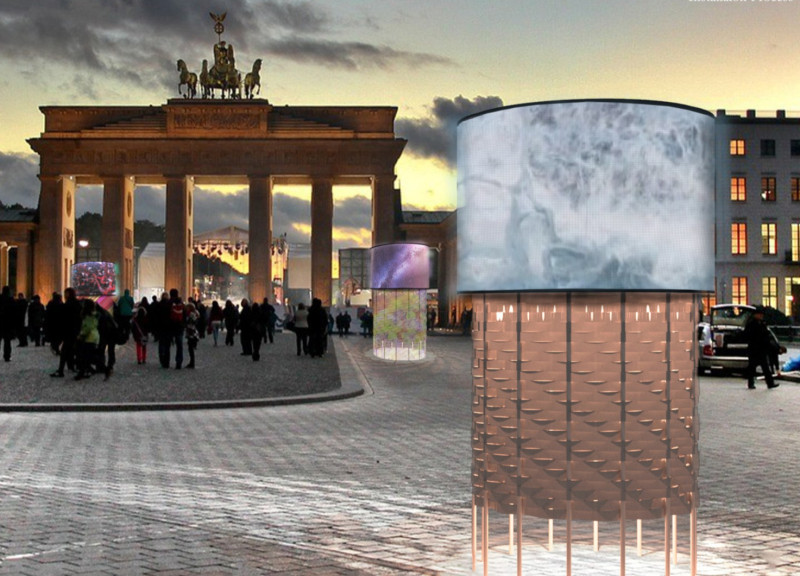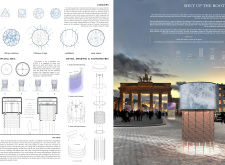5 key facts about this project
The architectural project "Shut Up the Booth" offers an innovative design solution tailored for urban environments, particularly responsive to the needs for social interaction amid health guidelines. Located at the Brandenburg Gate in Berlin, this project serves not only as a physical space but also as a focal point for community engagement. The booth is characterized by its compact footprint of 2 meters in diameter and a height of 3.4 meters, allowing it to fit seamlessly within busy public areas while maintaining a distinct identity.
The primary function of this structure is to provide a safe, enclosed environment for individual users to experience music and art without compromising on health protocols. The design incorporates features that enable both interaction and comfort, encouraging users to explore the space while remaining mindful of social distancing measures. The circular form promotes fluid movement and invites users to engage with the booth from multiple angles.
Unique Architectural Approaches
One of the defining aspects of "Shut Up the Booth" is its use of geometric shapes as reflective surfaces. This design choice is important as it allows natural light to enhance the interior ambiance while creating visually stimulating interactions between the structure and its surroundings. The booth also benefits from ventilation strategies that ensure a comfortable atmosphere, prioritizing user experience without sacrificing safety.
The incorporation of rotating strips serves as a unique aspect of the design. These strips can be manipulated to alter the space's openness, thus accommodating varying numbers of users and different types of interactions. This level of adaptability is crucial in public spaces, particularly in a time where the needs and behaviors of urban dwellers are constantly evolving.
Material Selection
The selection of materials plays a pivotal role in the functionality and aesthetic of the booth. Metal elements provide structural integrity while offering a modern finish. Glass, used in selective areas, enhances the booth's appeal and integrates it with the urban landscape. The use of finished wood adds warmth and contrast, ensuring the design is not just utilitarian but also inviting. Additionally, acoustic panels are utilized to manage sound quality, mitigating external noise and enhancing the auditory experience.
In summary, "Shut Up the Booth" represents a sophisticated intersection of design, functionality, and community engagement. Its thoughtful approach to materials, space, and interaction differentiates it from typical public installations. Readers are encouraged to explore the project's architectural plans, sections, designs, and ideas to gain further insights into its innovative approach and potential applications in urban settings.



















